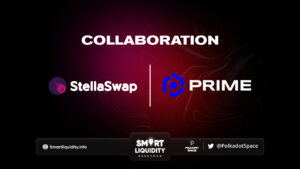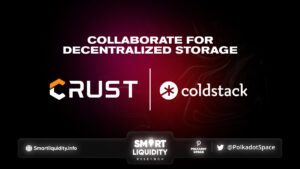Bifrost Take On Ethereum Staking Potential!


Bifrost take on Ethereum Staking to Unleash Liquid Staking Potential
Bifrost Take On Ethereum. The industry’s much-anticipated Ethereum merger saw Ethereum transition from PoW to Pos. ETH will shift to a deflationary model following the Merge. Total token supply reduction will create deflationary pressure and have a continued positive price impact. The ETH issued will be paid to verifying nodes to help secure the network. Not only will the reduced issuance make ETH a deflationary currency compared to the pre-merger period, but energy consumption will also reduce by ~99%.
They’ll analyze the relationship between staking finance and PoS mechanisms and the development of liquid staking to estimate the Ethereum merge impact.
PoS & Staking
The PoS method is intrinsically tied to staking, as staking is used to reach and co-create consensus in the blockchain network. Validators use their native token holdings on the blockchain to aid in transaction validation via Staking. Verifiers receive compensation for correctly confirming blocks. Staking also maintains the security and stability of the PoS blockchain.
With Ethereum also opting for the PoS consensus mechanism and the increase in Staking behavior by crypto users, the pain points of Staking behavior become apparent. Staking assets are not available during the lock-in period, thus users bear the opportunity cost and market risk, and the ecosystem experiences inadequate asset liquidity. The crypto market’s demand for a Staking finance and related derivatives economy will grow, so the StakeFi track in the Ethereum ecosystem will become a crucial part of DeFi following the merger.
Before the merger, staking finance was developing, with numerous inventive projects in StakeFi gaining market practice and recognition by providing liquid staking. StakeFi growth lowered the threshold for participation in staking protocols, reducing the opportunity risk and asset lock period. Thus, users could unlock more potential from their staked assets.
After the switch to the PoS consensus mechanism, staking finance, especially liquid staking, will become a pivotal investment and a valuable area in the ecosystem.
Merge & Liquid Staking
Liquid staking refers to the process in which users obtain liquidity by staking their assets. Investors mortgage tokens (such as ETH) into a certain protocol than the protocol mints the claim assets of the staked token. Staking reward still attribute to liquid Staking derivative tokens, such as LP tokens of decentralize exchanges. Liquid derivative tokens enable unrestricted DeFi investments, allowing users to realize gains.
Messari’s statistics reveal the current market value of all staked tokens as ~$146 B, the total value locked in DeFi is ~$186 B, and the liquid staking protocol market size is $10.5 B. Messari estimates that liquid staking could see a significant wave of market growth as crypto networks such as Ethereum shift to a proof-of-stake (PoS) consensus mechanism. By 2025, it is expected that the annual reward of staking will reach $40B, and the liquid pledge penetration rate relative to the total reward will achieve an annual growth rate of 17%-40%.
At the same time, under the two-way promotion of the increase of liquid staking, the staking yield is expected to increase, because, after the merger, stakers may obtain transaction fees and reward from MEV (Miner Extractable Value), which is expected to improve the staking yield from about 4% to 6–12%. The higher yield will help attract more stakers into various liquidity pools.
The smooth development of liquid staking will be the driving force for the development of Ethernet under the PoS mechanism. Improving network security and flexibility, deepening decentralization, enriching the application scenarios of the ecology, and opening new business models.
Liquid Staking — Bifrost
A challenge for users is choosing a liquid staking protocol and product, given the proliferation of StakeFi in various ecosystems. Based on the method of staking as a division, there are four types of liquid staking: native, non-native, synthetic, and custodial. We’ll focus on custodial staking. Corresponding to custodial staking is non-custodial staking, the core of which is whether users have complete control over their assets. We can see the advantages of non-custodial staking from the following custodial/non-custodial staking comparison.
Custodial Staking
Custodial staking where the custodian involved in the staking issues tokenization of the staked assets. Enabling the user to receive the staked proceeds while the custodian takes part in the Staking. It’s like contractual law, where the custodian holds the tokens on behalf of the stakee through an associated protocol. A crucial advantage of custodial staking is that it encapsulates the technical threshold of node construction and maintenance so that the average user does not have to bother with hard and software setup, Slash penalties, etc. Non-custodial staking means that users have control over their assets and staking reward, and jointly manage verification nodes with service providers through two keys.
Custodial staking is further broken down into full custodial and staking pools. In fully hosted, the custodian takes care of all node transactions. The user transfers the ETH participating in the staking to the custodian, who will manage and operate the validator nodes 100% for the user and share the staking rewards. While a fully managed user does not have to worry about the operation and maintenance of the validator node. The control of the assets and the custodian’s reputation during the staking period is unavoidable. A user may lose their staking reward and their principal amount in a risk situation.
Therefore, decentralized non-custodial staking can bring users greater asset freedom. Therefore, compared with the custody scheme, the non-custodial scheme has more advantages. After all, the control and ownership of the staked assets still belong to the user, which also reflects the essence of decentralization.
Decentralized Staking Pools
Custodial & non-custodial staking are view from a centralize/decentralize perspective. With centralize fully custodial staking services in the form of common exchanges, notably CEX & cloud wallets. Decentralized, also known as non-custodial staking, divided into native self-built nodes, node-providing service providers, aggregated liquid stakings and pooled liquid stakings.
Closer to decentralization and more scalable: decentralized staking pools can control any percentage of the staking share in the network. Avoiding the dominance of single staking, thus avoiding the problem of centralization.
Staking derivatives are de-trust — they cannot be fake or forge. When the yield of liquid staking does not create a significant difference. A de-trusted and decentralized derivative token will be more in line with the choice of crypto users.
Reduced MEV withdrawal restrictions: Whereas centralized staking such as CEX would be more restricted by MEV withdrawals, decentralized staking pools could, in this space, give more of the MEV withdrawn with centralized staking pools to stakers, attracting more stakers.
Choose Bifrost for liquid staking
Bifrost Finance committed to StakeFi. We provide liquidity solutions and underlying protocols for staked assets. When ETH 2.0 beacon chain staking was launch in 2020. The liquidity derivative vETH was release to enable users to participate in ETH 2.0 beacon chain. Staking through the Bifrost Dapp channel. The staking derivative protocol from Bifrost proven by the market & is user-friendly, easy to operate, liquidity free, & highly profitable.
Bifrost Finance’s successful Staking Liquidity Protocol (SLP) is a notable example of an exemplary liquidity staking protocol solutions. SLP a fully decentralized Staking derivative forged through XCM broadcasts to invoke cross-chain Staking interoperability. Thus solving the problem of conflicting revenues between the underlying consensus mechanism and the ecological application. The SLP protocol provides users with multiple benefits, including Staking liquidity and lowers the barrier to Staking participation.
In the grand scheme of Web3. The question how to seize the opportunity in the age of Ethereum staking is a concrete question for users & investors. With the advent of staking finance, liquid staking and its liquid derivatives are bound to be a practical investment option. It is Bifrost’s drive & vision to continue to provide excellent investment returns & security to investors & to connect with the decentralized era.
About Bifrost
Bifrost a cross-chain network built on a substrate that gives liquidity to staked assets as staking derivatives. It is based on open-source platforms, primarily as a Polkadot parachain. Because of Bifrost’s cross-chain functionality, others can create integrations to enable staking on other PoS networks.
The Bifrost offers vToken as a DeFi project in the Polkadot ecosystem. Allowing users to exchange PoS tokens to vToken & gain liquidity & staking incentives via protocol at any moment.




